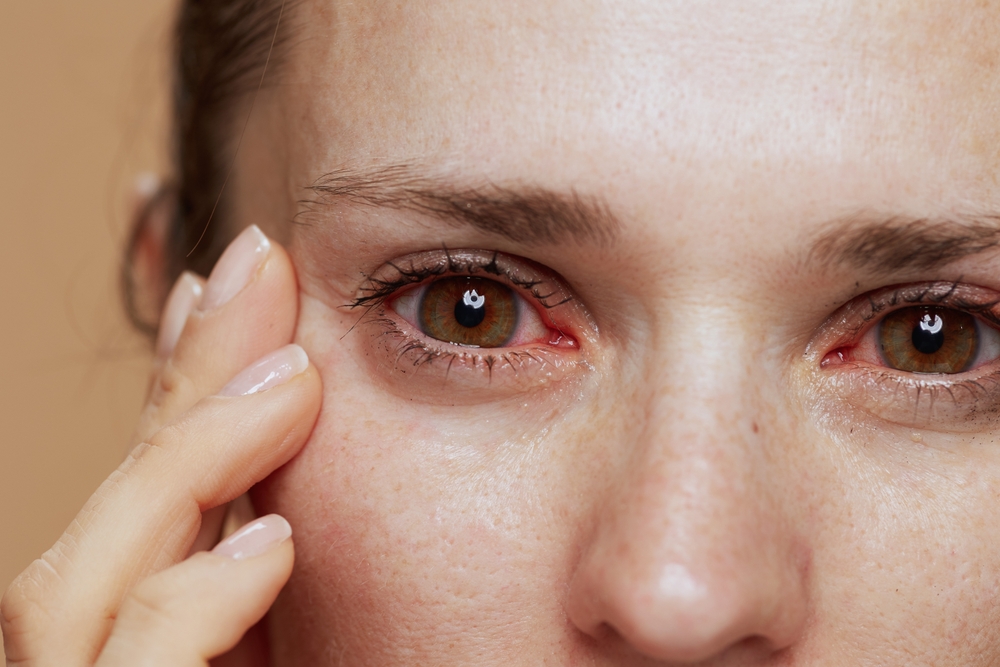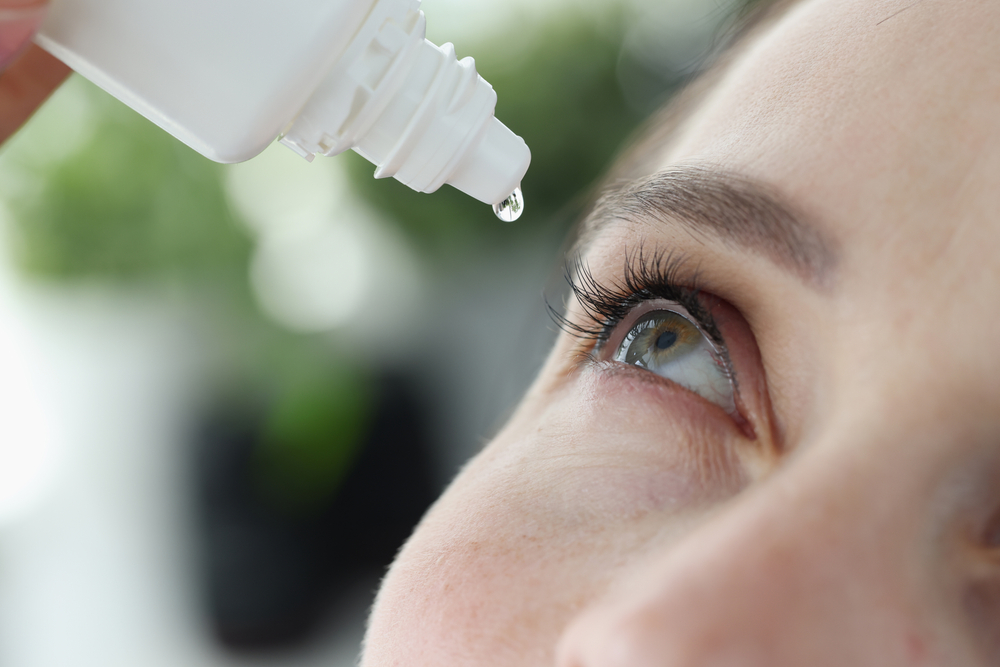
The term heterochromia can sound a little intimidating to those who’ve never heard it before or don’t know what it is. But, thankfully, the word is a lot scarier than the condition it represents. There’s a lot to know about heterochromia, so let’s unpack what exactly it is, the different types it can take the form of, what the causes are, the steps to take to diagnose it, and how to get treatment, if necessary.
What is Heterochromia?
What does it mean when you have two different colored eyes? That’s a condition call heterochromia! Heterochromia, also known as bicolor eyes, is a rare and unique condition where a person’s eyes are two different colors. This can occur in one eye or affect parts of both eyes. Even dogs—like Huskies and Border Collies—can be seen with distinctively different colored eyes. The reason for this phenomenon is a rare condition that affects the iris and the melatonin that gives it its color. Heterochromia can be present at birth or develop later in life due to certain medical conditions or injuries.
Different Types of Heterochromia Eyes
There are three types of heterochromia: complete, central, and sectoral. It’s fairly easy to tell the difference between the three types, as each of them has their own unique physical appearance.
Complete Heterochromia Eyes
Complete heterochromia is the rarest type of the condition. It occurs when each eye is a fully different color than the other. For example, if one eye is completely green and the other is dark brown, this would be considered complete heterochromia.
Central Heterochromia Eyes
Central heterochromia occurs when the multi-coloration starts within the eye. There will be a different color near the pupil, but as it moves toward the edge of the iris, it shifts to a different color. With central heterochromia, both eyes are typically affected in a similar manner. For example, the color around the pupil could be brown and gradually switch to green around the edges. This type can be commonly confused with hazel eyes. However, the difference is that central heterochromia has two distinct colors in two specific areas, while hazel is a mixture of multiple colors throughout the iris.
Sectoral Heterochromia Eyes
Sectoral heterochromia, which can also be referred to as partial heterochromia, is the most varied of the types. It takes place when an eye has a secondary color that forms a “slice” or “wedge.” It can occur in one or both eyes and doesn’t necessarily manifest in both the same way. For example, one blue iris could have a thin slice of brown, while the other could have the brown take over a majority of the iris.

What Causes Heterochromia?
So why do some people have two different colored eyes? The causes of heterochromia typically depend on whether the condition is congenital, or if it’s acquired. Both exhibit in the same way, but at different times in a person’s life. The causes behind them can vary pretty drastically.
Congenital Heterochromia
Congenital heterochromia is when the condition is present at birth, or shortly after. If it’s congenital, it is generally considered to be harmless and just caused by a genetic mutation. In these cases, the babies will be given an eye examination to rule out any underlying causes. While uncommon, it is possible that congenital heterochromia could be caused by other issues. The following examples are conditions that could manifest with heterochromia as an indication:
- Horner’s syndrome: a rare condition that affects the eye and face due to disruption of sympathetic nerve supply.
- Waardenburg syndrome: a group of genetic conditions that can cause changes in coloring in skin, hair, and eyes.
- Sturge-Weber syndrome: a neurological disorder that typically manifests in a port-wine birthmark, a brain abnormality, and excessive pressure in the eyes.
- Piebaldism: a condition that is characterized by a lack of melanocytes (which create melatonin) in specific areas of a person’s hair and skin.
- Bourneville disease (tuberous sclerosis): a hereditary disorder that can cause seizures, behavioral and developmental slowness, and a variety of diseases in the kidneys and lungs.
- Hirschsprung disease: a birth defect in which nerve cells are missing from the infant’s large intestine.
- Bloch-Sulzberger syndrome: an X chromosome-linked syndrome that manifests in abnormalities in a person’s skin, hair, eyes, teeth, and central nervous system.
Acquired Heterochromia
Acquired heterochromia is when the condition becomes present later in life, which is less common and more concerning. It can happen over time or rapidly due to the following factors:
- Eye injury: any incident that can cause bruises, punctures, or scratches.
- Eye surgery: typically due to intraocular surgery, like pars plana vitrectomy or cataract surgery.
- Uveitis: inflammation inside the eye, generally due to a person’s body fighting an infection.
- Glaucoma: a group of diseases that damage the optic nerve in the back of the eye, which can cause vision loss or blindness.
- Glaucoma medication: an effect of the medication that can cause a person’s natural iris color to darken over time.
- Diabetes: a chronic condition that affects how a person’s body transforms food into energy.
- Eye tumors (benign or cancerous): a collection of abnormally growing cells in a person’s eye.
- Central retinal vein occlusion (CRVO): a condition that occurs when a person’s main vein flowing from their retina is blocked by a blood clot.
Heterochromia Diagnosis & Treatment
Diagnosis and treatment for heterochromia varies depending on a couple of factors surrounding the condition. The condition itself is not harmful and does not need to be treated. The only changes to the body are aesthetic. If the condition is simply a genetic mutation, the symptoms can be covered by colored eye contacts if the iris color variations are undesired.
This is usually the case for congenital heterochromia. If the condition presents itself in infants, there is not generally a need or concern for treatment. As mentioned before, the baby would need to visit an eye specialist for an official diagnosis and to make sure there are no underlying causes that could be more serious. If one is found, it will be the underlying condition that will need to be treated.
As for acquired heterochromia that occurs later in life, a comprehensive eye exam will be necessary to find out what is causing the change in iris color. This underlying disease or condition will need to be pinpointed and treated. In these cases, heterochromia is not the cause of these conditions. Heterochromia can be a symptom that will alert a person to seek help for what could potentially be a more serious issue.
Comprehensive Eye Care From Specialty Eye Institute
From comprehensive, routine exams to cataract eye surgery and everything in between, Specialty Eye Institute’s physicians are here to take care of you. For over 40 years, we’ve been trusted as an innovative expert in the industry. We have accomplished this by always putting our patients first. We have a commitment to technology and research that allows us to be on the cutting edge of treatments.
Are you in need of comprehensive eye care? Whether you need a routine eye exam or treatment for a condition, take the leap to better vision and a clearer future by setting up an appointment at Specialty Eye Institute.
 877-852-8463
877-852-8463 Careers
Careers Locations
Locations Patient Portal
Patient Portal Request Appointment
Request Appointment



 877-852-8463
877-852-8463
